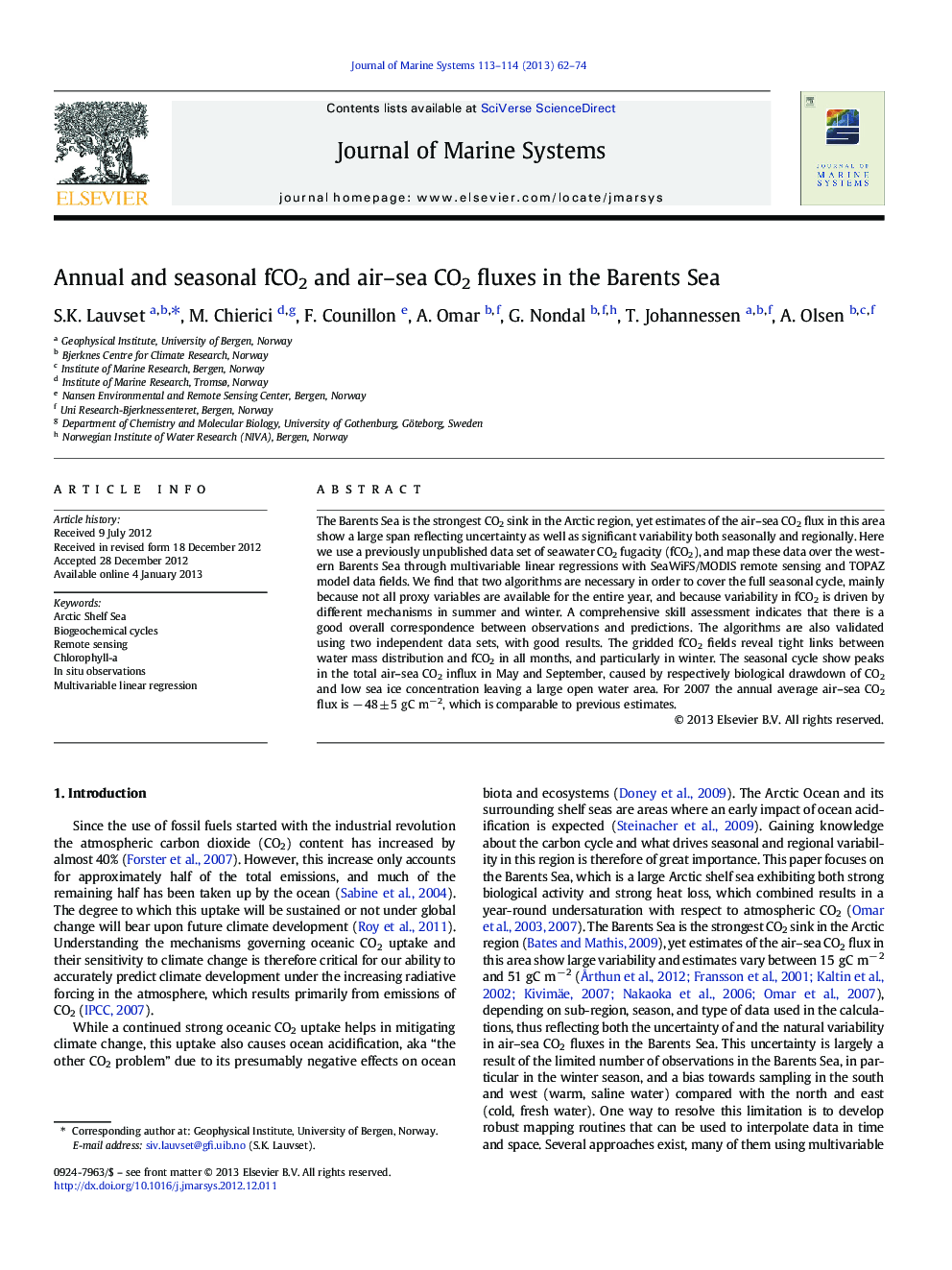| کد مقاله | کد نشریه | سال انتشار | مقاله انگلیسی | نسخه تمام متن |
|---|---|---|---|---|
| 4548128 | 1627310 | 2013 | 13 صفحه PDF | دانلود رایگان |

The Barents Sea is the strongest CO2 sink in the Arctic region, yet estimates of the air–sea CO2 flux in this area show a large span reflecting uncertainty as well as significant variability both seasonally and regionally. Here we use a previously unpublished data set of seawater CO2 fugacity (fCO2), and map these data over the western Barents Sea through multivariable linear regressions with SeaWiFS/MODIS remote sensing and TOPAZ model data fields. We find that two algorithms are necessary in order to cover the full seasonal cycle, mainly because not all proxy variables are available for the entire year, and because variability in fCO2 is driven by different mechanisms in summer and winter. A comprehensive skill assessment indicates that there is a good overall correspondence between observations and predictions. The algorithms are also validated using two independent data sets, with good results. The gridded fCO2 fields reveal tight links between water mass distribution and fCO2 in all months, and particularly in winter. The seasonal cycle show peaks in the total air–sea CO2 influx in May and September, caused by respectively biological drawdown of CO2 and low sea ice concentration leaving a large open water area. For 2007 the annual average air–sea CO2 flux is − 48 ± 5 gC m− 2, which is comparable to previous estimates.
► In situ fCO2 measurements, remote sensing data, and model data are used to make maps of fCO2 and CO2 flux in the Barents Sea.
► There are close links between water mass structure and fCO2 in the Barents Sea, particularly in winter.
► The entire Barents Sea is undersaturated with respect to atmospheric CO2 all year, and therefore a carbon sink all year.
► The peak air-sea CO2 influx is in May and in September, due to biological drawdown and low ice concentration respectively.
► The spatial patterns in fCO2 and in air-sea CO2 flux are similar to previous studies, but the seasonal cycle is different.
Journal: Journal of Marine Systems - Volumes 113–114, March 2013, Pages 62–74